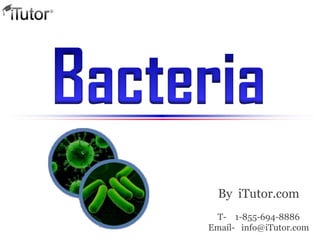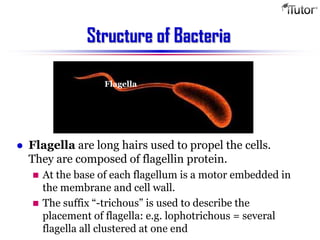This document provides information about bacteria. It describes bacteria as among the smallest living organisms that usually band together in colonies and can be autotrophic or heterotrophic. It discusses their basic shapes of rod, round, or spiral and their structures including cell walls, flagella, pili, and capsules. The document also covers how some bacteria move and feed, their importance in industry and nutrient cycles, and how certain bacteria can cause harmful diseases. It emphasizes the need to wash hands and properly store and cook food to avoid pathogenic bacteria.























